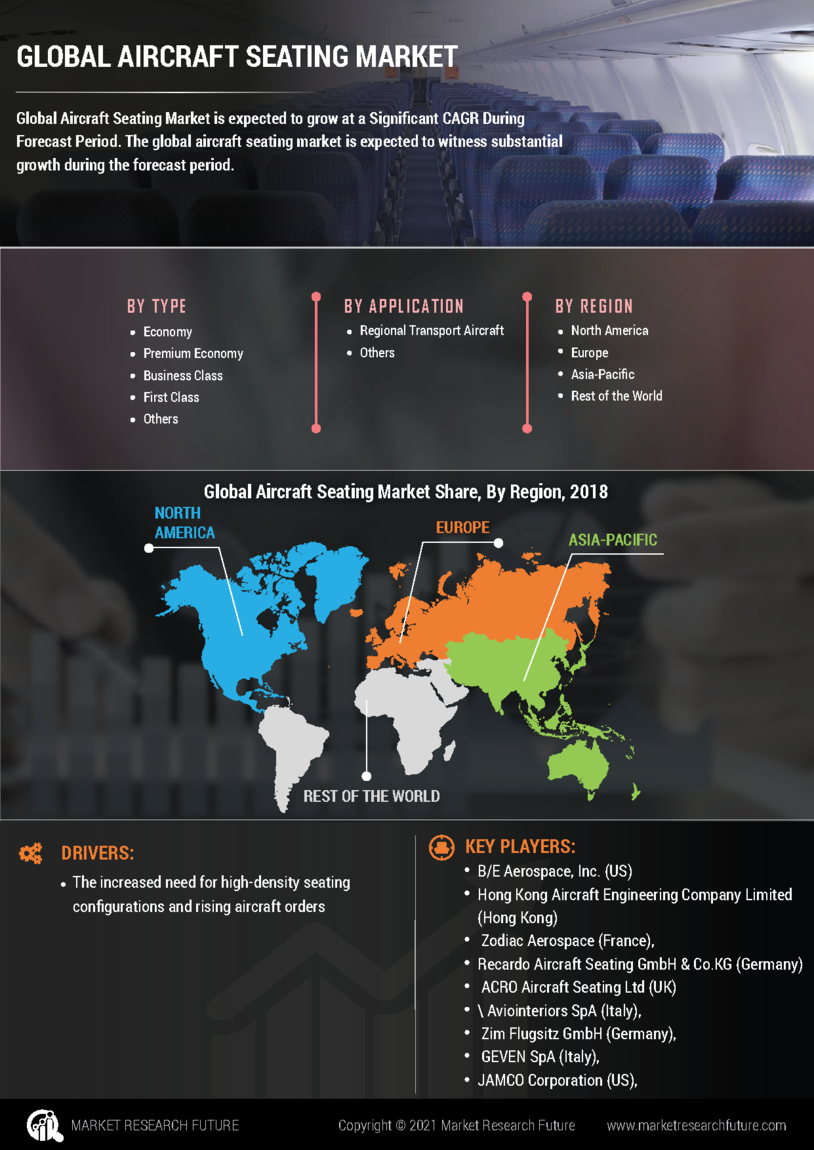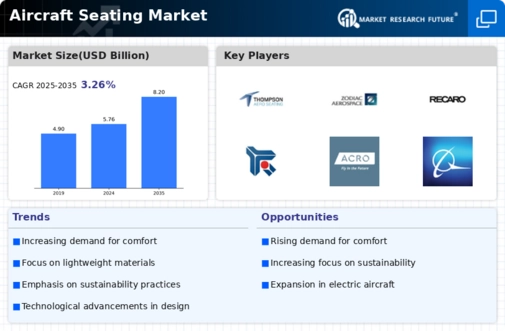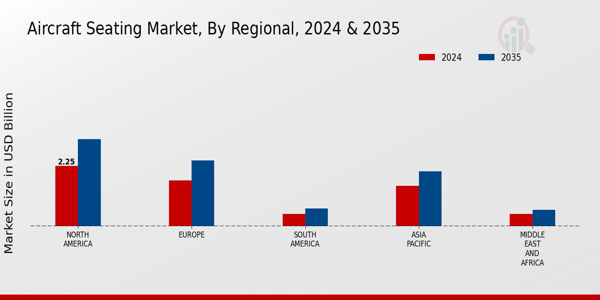Increasing Air Travel Demand
The Global Aircraft Seating Industry is experiencing a notable surge in demand due to the increasing number of air travelers. In 2024, the market is valued at approximately 5.76 USD Billion, reflecting the growing preference for air travel over other modes of transportation. This trend is driven by factors such as globalization, rising disposable incomes, and the expansion of low-cost carriers. As airlines strive to enhance passenger experience, investments in innovative seating solutions are likely to rise, further propelling market growth. The anticipated increase in air travel is expected to significantly influence the demand for advanced seating configurations and comfort features.
Market Trends and Consumer Preferences
The Global Aircraft Seating Industry is shaped by evolving market trends and consumer preferences. Passengers increasingly prioritize comfort, space, and amenities when selecting airlines, prompting carriers to adapt their seating configurations accordingly. Trends such as premium economy seating and customizable options are gaining traction, reflecting a shift towards personalized travel experiences. Airlines are likely to respond by investing in seating innovations that cater to these preferences, thereby enhancing customer satisfaction and loyalty. Understanding these trends is essential for manufacturers and airlines aiming to remain competitive in a rapidly changing market.
Sustainability Initiatives in Aviation
Sustainability initiatives are becoming increasingly important within the Global Aircraft Seating Industry. Airlines are under pressure to reduce their environmental footprint, leading to a demand for eco-friendly seating solutions. This includes the use of sustainable materials and manufacturing processes that minimize waste and energy consumption. As the industry moves towards greener practices, seating manufacturers are likely to innovate in creating products that align with sustainability goals. This shift not only addresses environmental concerns but also appeals to environmentally conscious consumers, potentially influencing purchasing decisions and market dynamics in the coming years.
Regulatory Compliance and Safety Standards
The Global Aircraft Seating Industry is significantly influenced by stringent regulatory compliance and safety standards imposed by aviation authorities. Regulations concerning seat design, materials, and safety features are critical for ensuring passenger safety during flights. Airlines are compelled to invest in seating solutions that meet these regulations, which may involve retrofitting existing aircraft or incorporating new designs in upcoming models. This focus on safety not only enhances passenger confidence but also drives the demand for innovative seating solutions that comply with evolving standards. As regulations continue to evolve, the market is likely to see increased investments in compliant seating technologies.
Technological Advancements in Seating Design
Technological advancements play a pivotal role in shaping the Global Aircraft Seating Industry. Innovations in materials, ergonomics, and design are leading to the development of lighter, more comfortable, and space-efficient seating solutions. For instance, the integration of smart technologies, such as adjustable seating and in-flight entertainment systems, enhances passenger experience. These advancements not only improve comfort but also contribute to weight reduction, which is crucial for fuel efficiency. As airlines continue to prioritize passenger satisfaction and operational efficiency, the demand for technologically advanced seating is expected to grow, driving the market forward.
Projected Market Growth and Investment Opportunities
The Global Aircraft Seating Industry is projected to grow from 5.76 USD Billion in 2024 to an estimated 8.2 USD Billion by 2035, indicating a compound annual growth rate (CAGR) of 3.26% from 2025 to 2035. This growth presents substantial investment opportunities for stakeholders in the aviation sector. As airlines expand their fleets and modernize existing aircraft, the demand for new seating solutions is expected to rise. Investors may find lucrative prospects in companies that specialize in innovative seating designs and technologies. The anticipated market growth underscores the potential for advancements in passenger comfort and operational efficiency.




















Leave a Comment